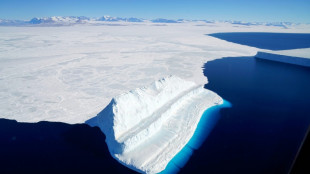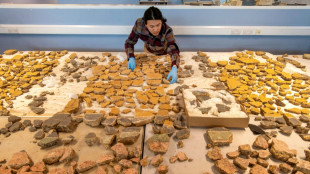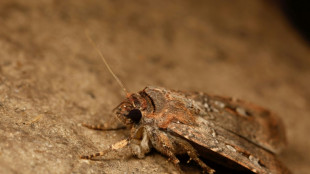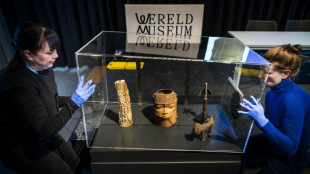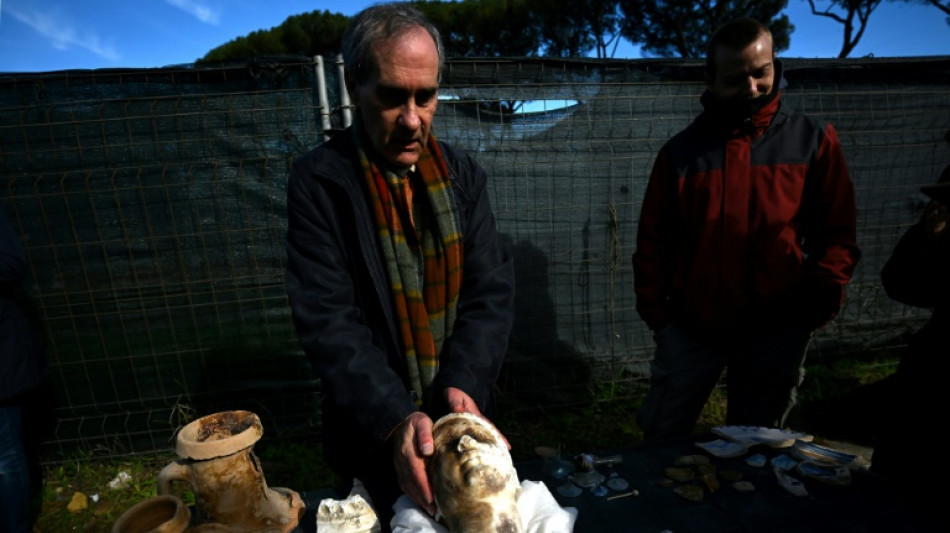
-
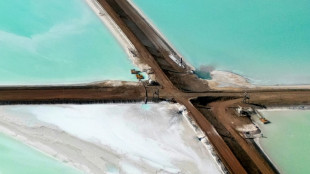 Europe's lithium quest hampered by China and lack of cash
Europe's lithium quest hampered by China and lack of cash
-
Japan-US-Philippines hold coast guard drills with eye on China
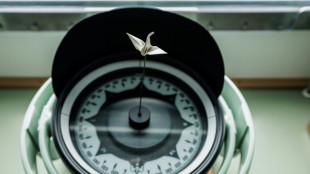
-
 Richards strike gives USA spot in Gold Cup quarters
Richards strike gives USA spot in Gold Cup quarters
-
Pacers thrash Thunder to stay alive in NBA Finals

-
 Cheap alms bowls imports hit Sri Lanka makers, monks
Cheap alms bowls imports hit Sri Lanka makers, monks
-
Pacers demolish Thunder to stay alive in NBA Finals

-
 PSG stunned by Botafogo in Club World Cup upset
PSG stunned by Botafogo in Club World Cup upset
-
Peru gas workers find thousand-year-old mummy
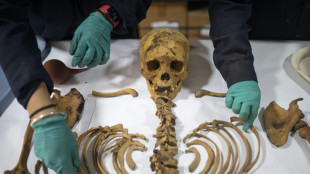
-
 UK MPs to hold crunch vote on assisted dying
UK MPs to hold crunch vote on assisted dying
-
Australian trial says tech for social media teen ban can work

-
 Thai PM to meet army commander to defuse political crisis
Thai PM to meet army commander to defuse political crisis
-
Rice prices double in Japan as inflation accelerates
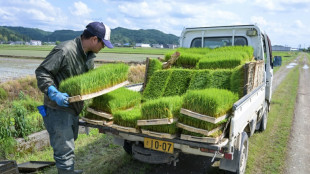
-
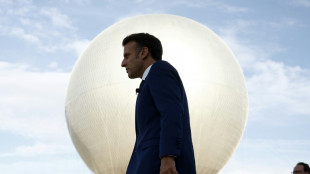 Summoning golden Olympic memories, Paris parties like it's 2024
Summoning golden Olympic memories, Paris parties like it's 2024
-
Peru's Maido named world's top restaurant on 50 Best list

-
 US singer Chris Brown in London court on assault case
US singer Chris Brown in London court on assault case
-
Thailand credits prey releases for 'extraordinary' tiger recovery
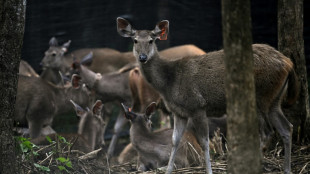
-
 Can NATO keep Trump on-message about Russia threat?
Can NATO keep Trump on-message about Russia threat?
-
Australia drop struggling Labuschagne for first West Indies Test
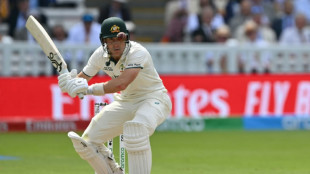
-
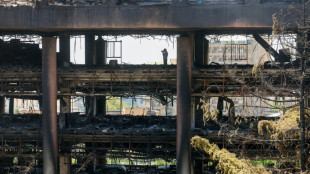 European, Iranian diplomats to meet as US mulls joining Israel campaign
European, Iranian diplomats to meet as US mulls joining Israel campaign
-
Paris makes clean water bet for River Seine bathers
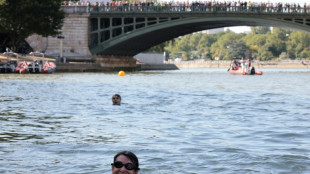
-
 Jeeno Thitikul edges clear as heat takes toll at Women's PGA
Jeeno Thitikul edges clear as heat takes toll at Women's PGA
-
Critic of Nicaragua's Ortega shot dead in exile in Costa Rica
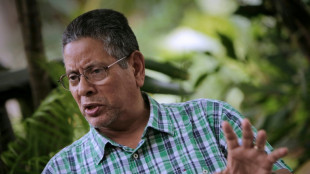
-
 Barrios double gets Atletico back on track
Barrios double gets Atletico back on track
-
World No. 1 Scheffler shares lead at PGA Travelers Championship
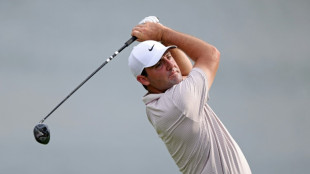
-
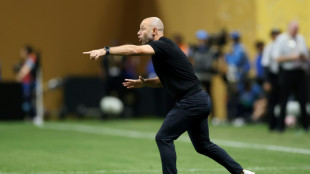 Messi's 'winning spirit' surprising: Inter Miami's Mascherano
Messi's 'winning spirit' surprising: Inter Miami's Mascherano
-
US immigration agents barred from LA Dodgers' stadium: team
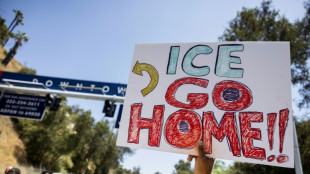
-
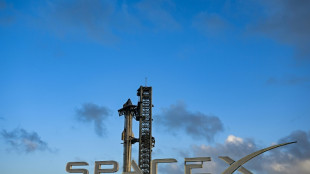 SpaceX Starship explodes on Texas launch pad
SpaceX Starship explodes on Texas launch pad
-
Messi strikes as Inter Miami stun Porto at Club World Cup

-
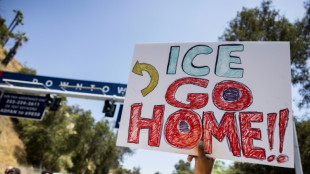 US immigration agents barred from LA baseball stadium: team
US immigration agents barred from LA baseball stadium: team
-
Jorginho gunning for old side Chelsea with Flamengo at Club World Cup

-
 Real Madrid star Mbappe released from hospital
Real Madrid star Mbappe released from hospital
-
World No.1 Sinner shocked in Halle second round by Bublik
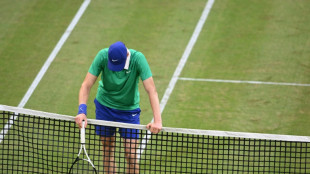
-
 Chelsea boss Maresca 'trusts' Mudryk after doping charge
Chelsea boss Maresca 'trusts' Mudryk after doping charge
-
Israel welcomes 'all help' in striking Iran, Trump to decide 'within two weeks'
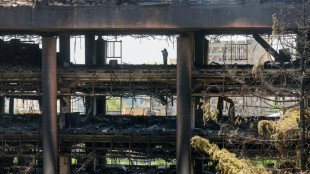
-
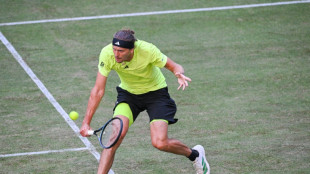 Zverev holds off Sonego to reach Halle quarter-finals
Zverev holds off Sonego to reach Halle quarter-finals
-
Palmeiras ease past Al Ahly in Club World Cup

-
 Alcaraz survives scare to reach Queen's quarter-finals
Alcaraz survives scare to reach Queen's quarter-finals
-
Stokes adamant Archer 'desperate' for England return

-
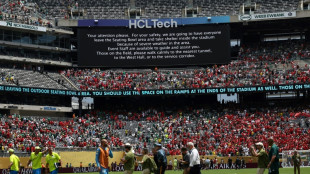 Palmeiras v Al Ahly Club World Cup clash suspended for weather
Palmeiras v Al Ahly Club World Cup clash suspended for weather
-
French Open winner Gauff falls at first hurdle on Berlin grass
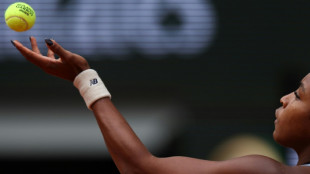
-
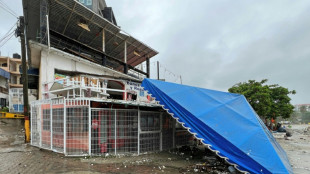 Cleanup begins as Hurricane Erick moves on from Mexican coast
Cleanup begins as Hurricane Erick moves on from Mexican coast
-
Restoration rejuvenates iconic Gaudi house in Barcelona
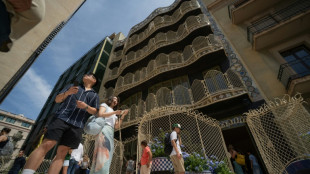
-
 France softens restrictions for Telegram founder Durov
France softens restrictions for Telegram founder Durov
-
Trump 'Golden Dome' plan tricky and expensive: experts
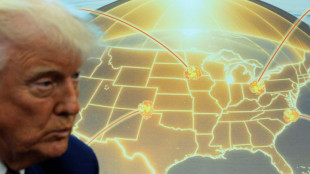
-
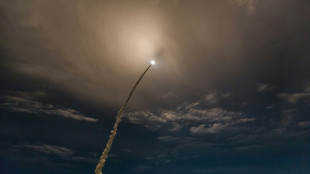 French state leads capital increase for satellite operator Eutelsat
French state leads capital increase for satellite operator Eutelsat
-
Russia steps out from shadows in Africa with state paramilitary

-
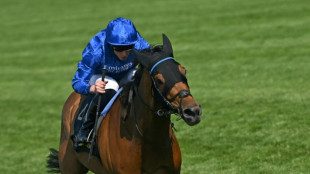 Trawlerman and Buick move into top gear to land Ascot Gold Cup
Trawlerman and Buick move into top gear to land Ascot Gold Cup
-
France softens restrictions for Telegram founder Durov: judicial source

-
 Trump extends deadline for TikTok sale by 90 days
Trump extends deadline for TikTok sale by 90 days
-
Indonesia leader touts growing Russia ties after talks with Putin
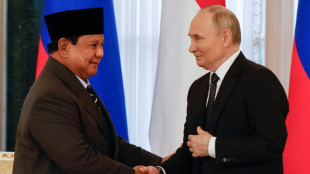

Rome archaeologists search for start of Appian Way
All roads lead to Rome, as the saying goes, and the most prestigious is the Appian Way, the strategic highway for the Roman Empire now hoping to become a UNESCO World Heritage Site.
A paved road of more than 500 kilometres (310 miles) begun in 312 B.C. by Roman statesman Appius Claudius Caecus, the "Via Appia" is an archaeological treasure trove, where an ongoing excavation hopes to uncover the actual starting point of the road in Rome.
The artery leading south to the key port of Brindisi at Italy's heel provided a gateway to the eastern Mediterranean, especially Greece, and was of strategic importance for the armies and merchants of a quickly expanding Rome.
This week, archaeologists showed off progress in their attempt to dig deep enough to unearth the beginning of the road, hidden far beneath Rome's Baths of Caracalla, built some five centuries after the Appian Way.
"What we see today is the result of an excavation that began in July with the central goal of finding clues to the location of the first section of the Appian Way," said archaeologist Riccardo Santangeli Valenzani.
The first, earliest section of the road is the one that provides "the most problems regarding the precise and exact location", the professor at Roma Tre University cautioned.
Construction of the Appian Way required Herculean engineering, from the levelling of the land, building of ditches and canals and surfacing of the road with gravel and heavy stone, to the building of post offices and inns to support the thousands of soldiers and merchants headed southward.
- Digging deeper -
Wandering today along the Appian Way --- its massive blocks of paving stone still visible in sections -- is to take a trip through the past.
Imposing monuments such as the first century B.C. tomb of a consul's daughter, Cecilia Metella, sit alongside ancient catacombs and churches, crumbling tombstones of Roman families and leafy villas.
The Appian Way sheds light not only on the Roman Republic and later Roman Empire, but also on life and death in the Middle Ages with its pilgrimage shrines and crypts.
The road also provides a glimpse of modern architectural wonders, such as the sumptuous villas owned by Italy's rich and famous, including film legend Gina Lollobrigida or former premier Silvio Berlusconi.
Italy, which earlier this month presented its bid for the Appian Way to UNESCO, already has 58 sites recognised as World Heritage Sites, the most of any country.
They include entire historical city centres, such as Rome, Florence and Venice, and archaeological areas such as the ruins of Pompeii and Herculaneum.
Work to locate the starting point of the Appian Way, believed to be some eight metres under the ground, has so far been complicated by groundwater.
Nevertheless, digging in higher strata of ground has unearthed relics from different periods, including a marble bust from the second century A.D. and an early papal square coin, minted between 690 and 730.
Archaeologists have also found fragments of glass and ceramics, mosaic and bits of amphora.
So far, the excavation has reached residential or commercial structures dating from the time of Emperor Hadrian, who died in 138 A.D.
Archaeologist Daniel Manacorda said the current excavation had reached the point of "late ancient Rome, the one that began to live in the ruins of ancient Rome".
"If we could continue to dig deeper, we would find archaic Rome," he said.
F.Qawasmeh--SF-PST

